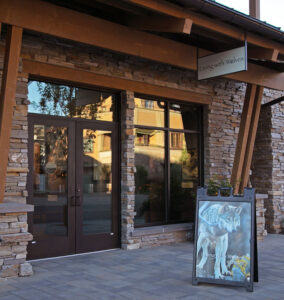The Language of Wolves
Communication is especially important for animals, like wolves, that live together in family groups, where coordinating, cooperating, and reinforcing bonds and status are all part of a necessary daily routine. Within a family of wolves, communication helps maintain social stability. It helps to reinforce pack solidarity and enables the opportunity for young pack members to learn information specific to the pack and how to survive. Communication is also used to express an individual’s intentions or emotional disposition or feelings. As with any highly social animal, communication amongst wolves is particularly complex and involved and it is vital to keeping the family functioning together as one. Wolves do use a range of vocalizations to “talk” to one another and express themselves, but much of how they communicate is done through body language and even the chemistry of scent.
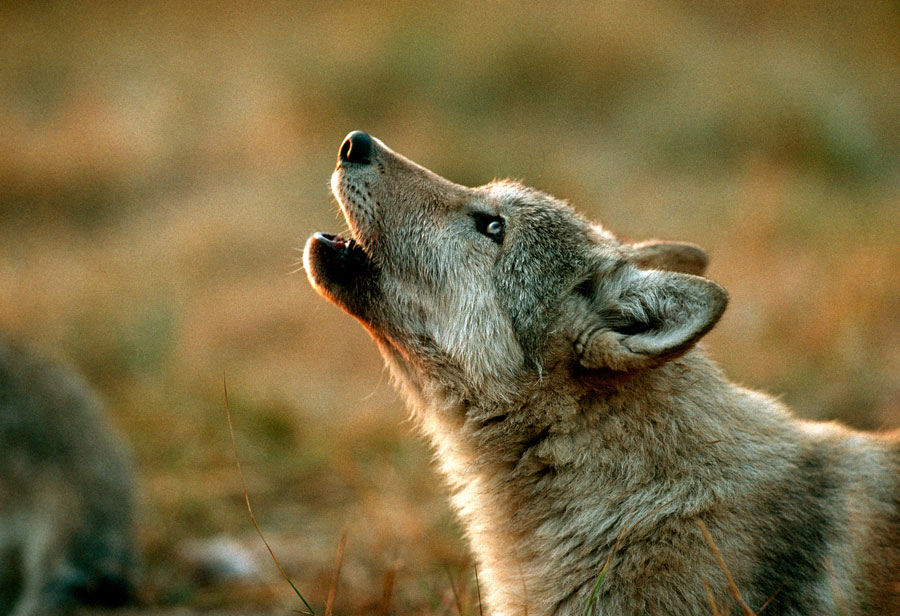
Vocalizations
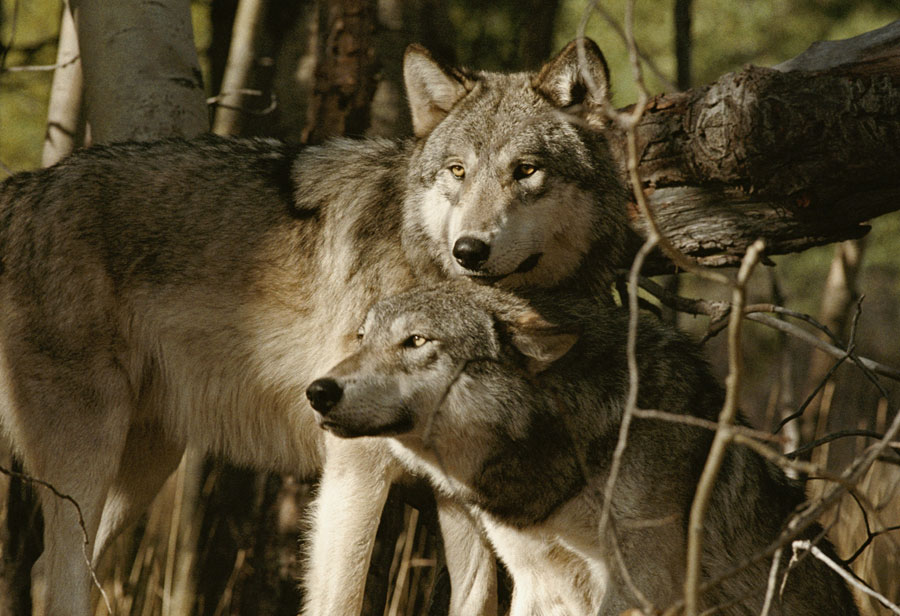
Body Language
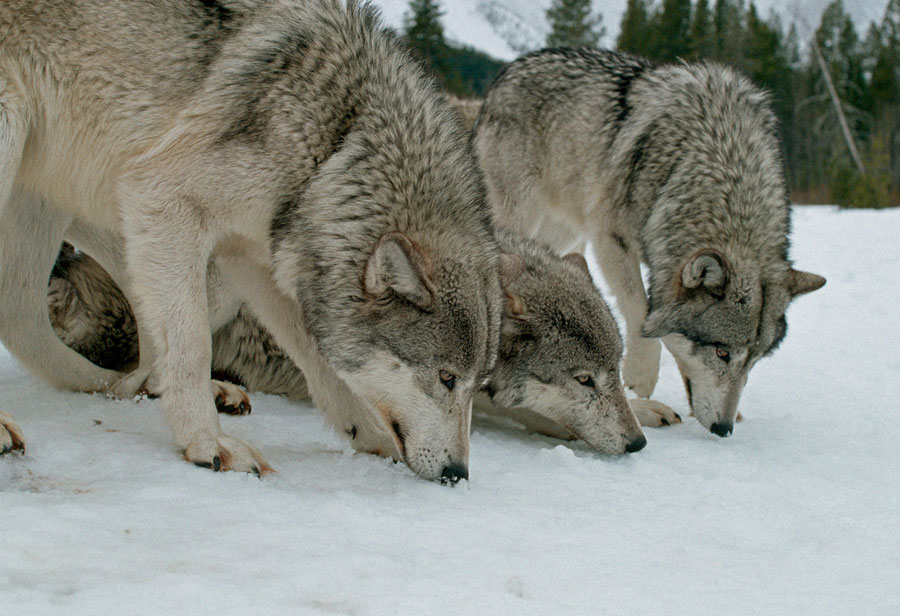
The Chemistry of Scent
BODY LANGUAGE
In a wolf pack, order is regularly reinforced by displays of dominance and submission through a complex mix of vocal and physical communications. Wolves employ a variety of non-vocal forms of communication to express and maintain their status, relying on their posture, facial expression, ear and tail positioning, and more to communicate their intention. Body language can also be accompanied and reinforced by vocalizations.
Read more about Body Language Click Here
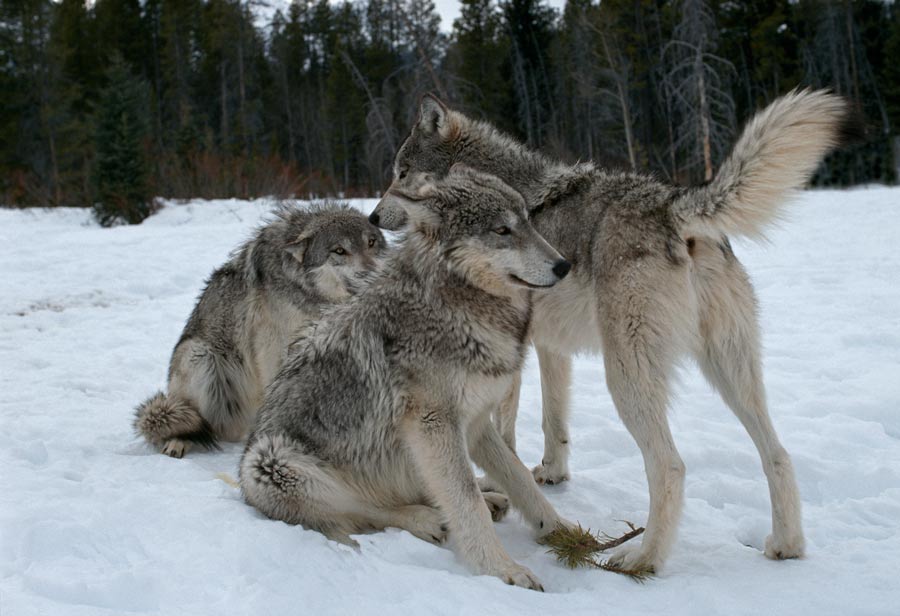
Posture:
High-ranking wolves carry themselves erect and may even place their heads on top of a subordinate wolf’s neck or back.
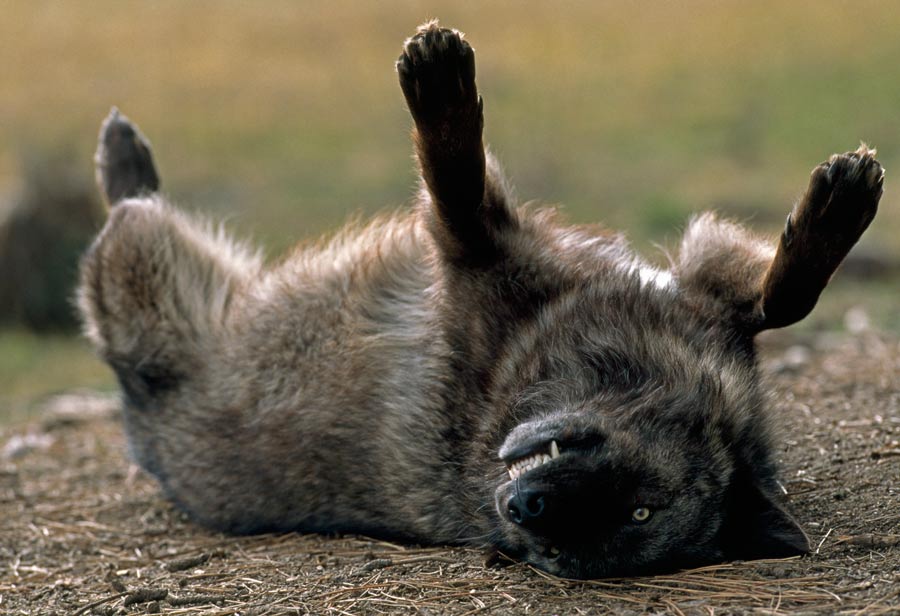
Submissive Posture:
This lower-ranking wolf shows submission by rolling over and showing his belly, the most vulnerable part of his body, to the dominant wolf.
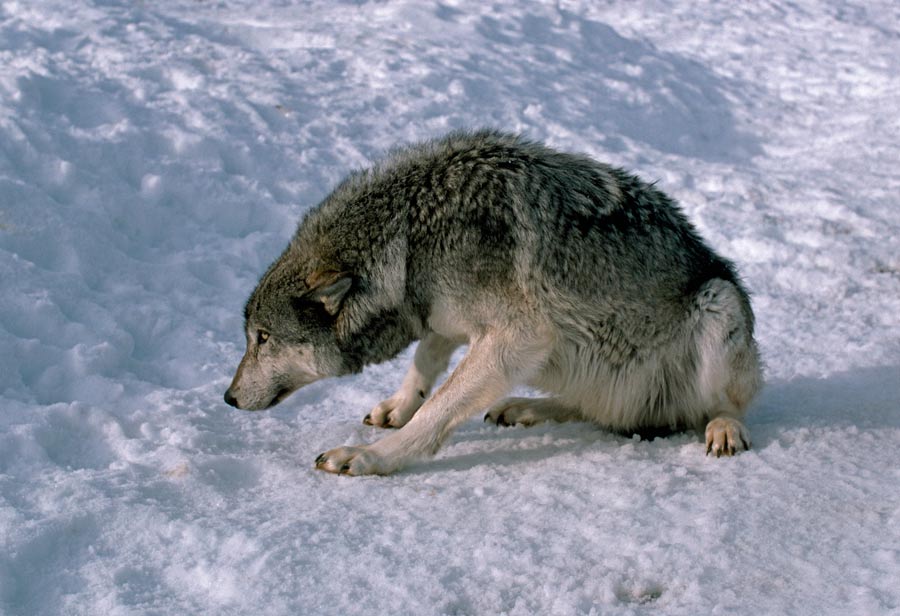
Crouching Position:
The omega wolf, the lowest member in the pack hierarchy, displays its role physically by assuming a crouched position when approaching another wolf.
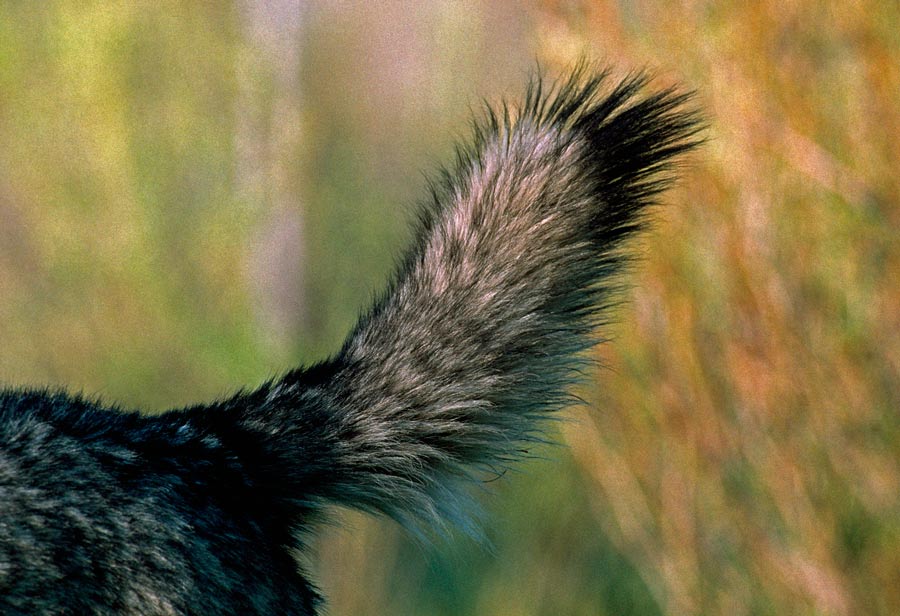
Dominant Tail:
A confident alpha male or female carries its tail high, as a visible sign of authority, signaling a leadership role in the pack structure.
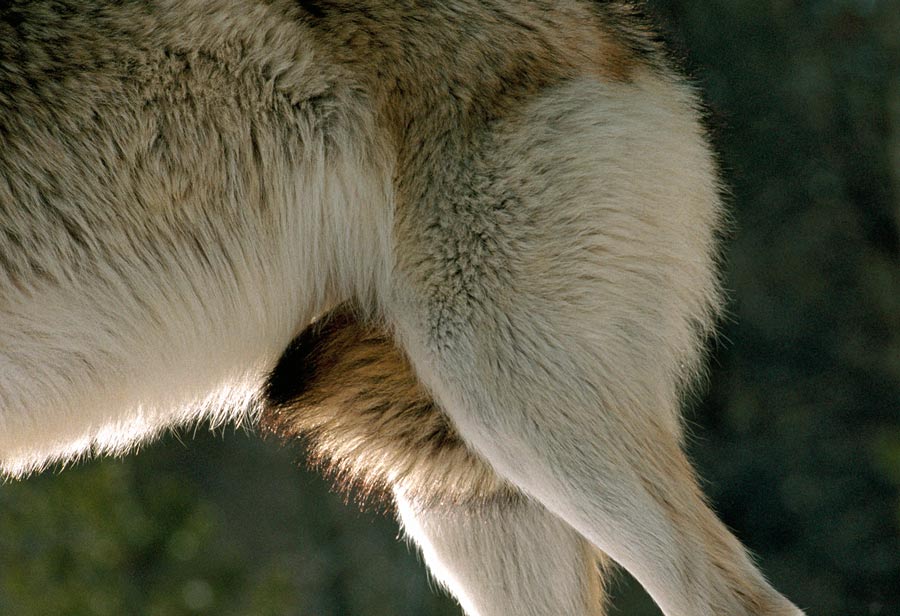
Submissive Tail:
Tucked between the legs and under the body of a submissive wolf, the tail is a noticeable sign of non-aggression to other wolves.
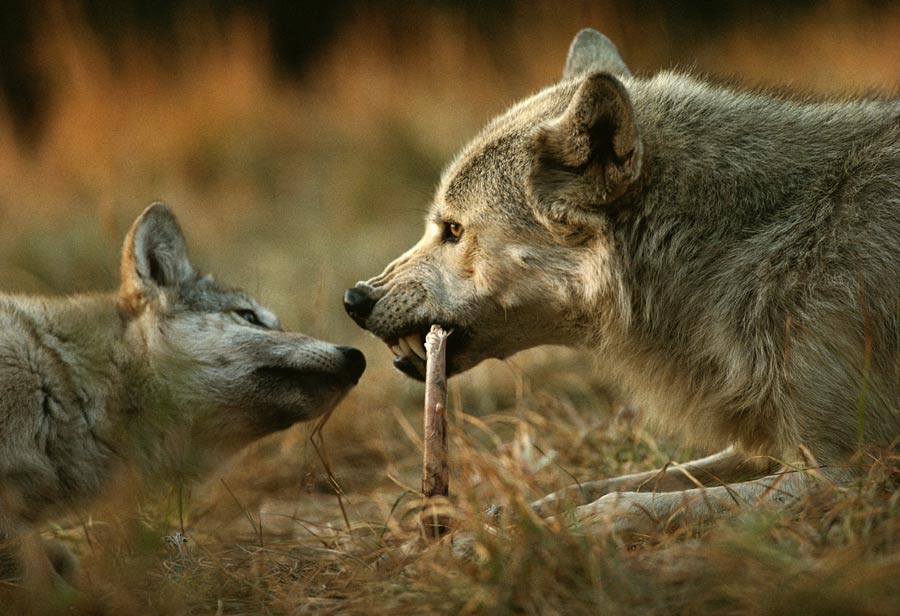
Facial Expressions:
A wolf’s face is a dynamic display of visual cues. A dominant wolf’s curled lips, bared teeth, fixed stare, and ears jutting out horizontally tell other wolves to back off.
Vocalizations
Vocalizations, such as growls, barks, whines, yips and whimpers, are equally as important as the non-vocal language of wolves. When people think of wolves communicating, they most likely think of howling. But wolves have an extensive repertoire of sounds. Whines and whimpers indicate friendly interaction but can also express frustration or anxiety. Growls and snarls are threatening or defensive. Barking is rare, and is usually used as an alarm signal. Howls seem to be about togetherness, whether the wolves are gathering for a hunt, mourning a lost pack mate, or announcing territorial or mating intentions.
Read more about vocalizations Click Here
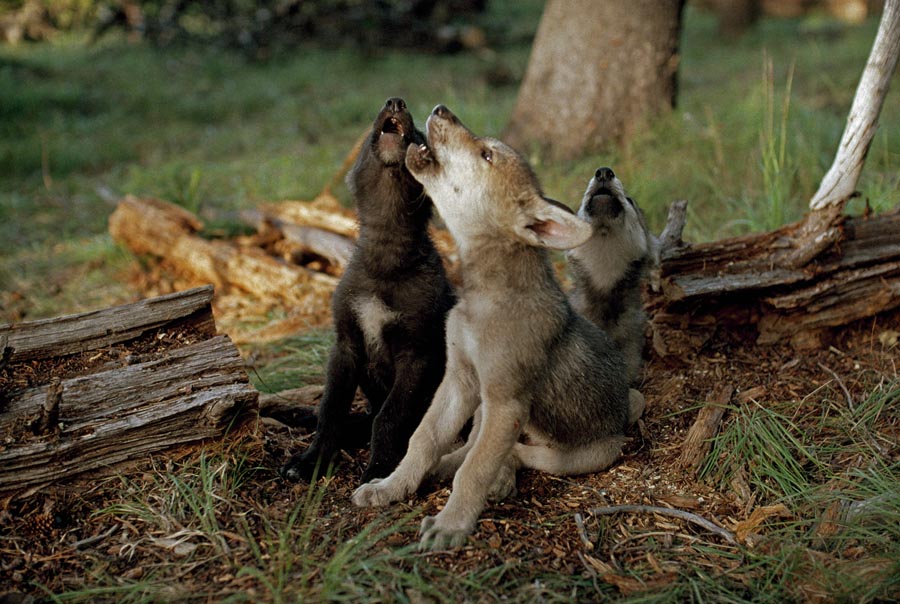
Pups Howl:
The adult wolves of the Sawtooth Pack knew when to end their howl, but young, enthusiastic pups often did not. Caught up in the excitement, they often let out a final “oop” before realizing the song was finished.
audio © Living with Wolves
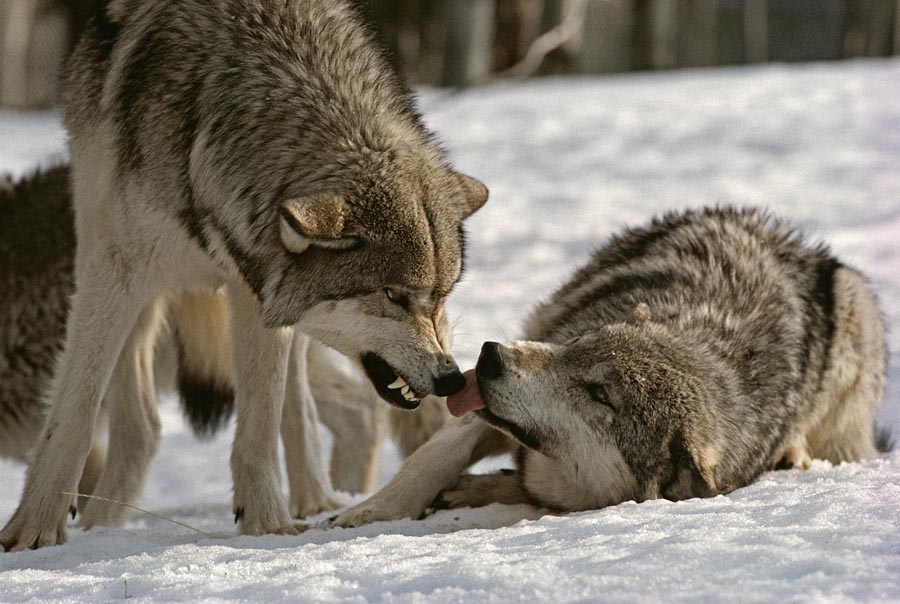
Wolf Growl:
Growls and snarls are threatening or defensive, generally used as a warning to intruders to stay away or to signify dominance.
audio © Living with Wolves
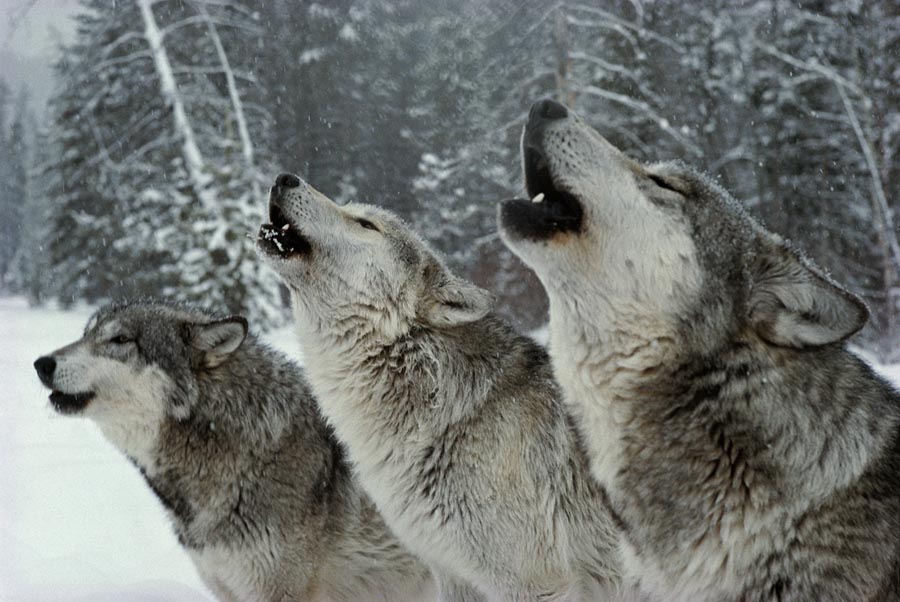
Pack Howl:
On no occasion are the social bonds of wolves more clear than during a pack rally. A rally occurs when the pack howls together in chorus. It is a call to assembly, a territorial claim, a declaration of solidarity, and a celebration of being alive and being together
audio © Living with Wolves

Wolf Barking:
Barking is rare, and usually used as an alarm signal when a wolf senses danger.
audio © Living with Wolves
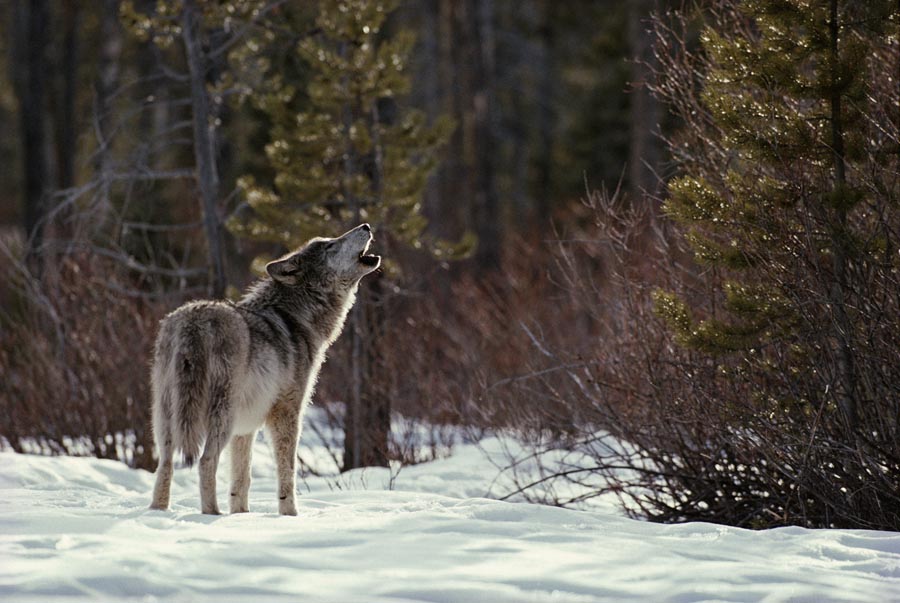
Lone Howl:
For three weeks after Kamots, the alpha of the Sawtooth Pack died, a single wolf was heard howling in the night. While the Dutchers never knew who it was, from their experience living with these wolves, they always believed it was his brother Lakota, the omega.
audio © Living with Wolves
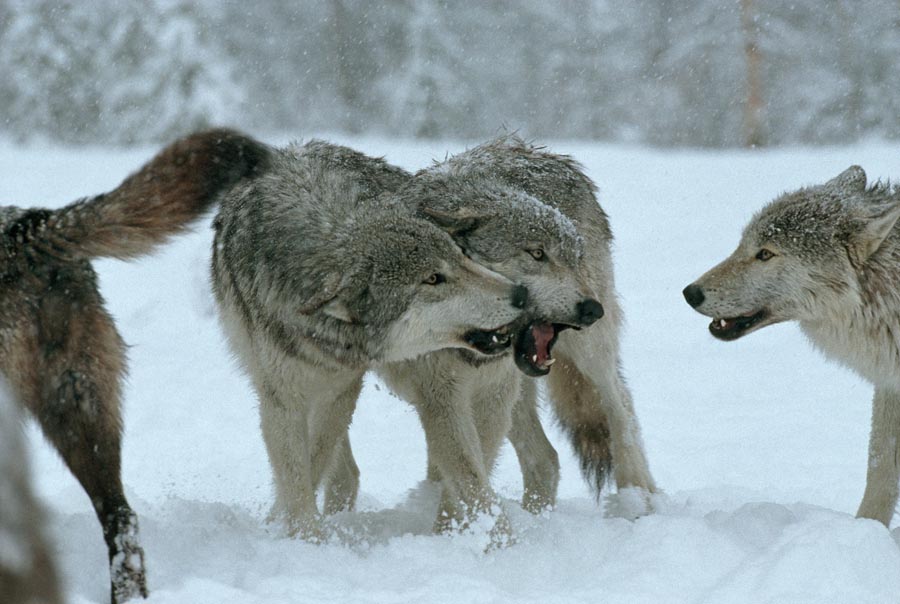
Whines & Whimpers:
Whines and whimpers often indicate friendly interaction but can also show frustration or anxiety. A wolf may also whimper to indicate its submission to a dominant wolf.
audio © Living with Wolves
Scent Communication
Smell is probably the most acute of a wolf’s senses, and another important way wolves communicate. Wolves have scent glands that produce a personal signature in the form of pheromones. These glands exist many places on a wolf’s body including the dark spot on the back of the tail and between the toes on the bottoms of their feet, leaving their personal chemical stamp on the ground and in the snow where they walk.
Read more about scent communication Click Here
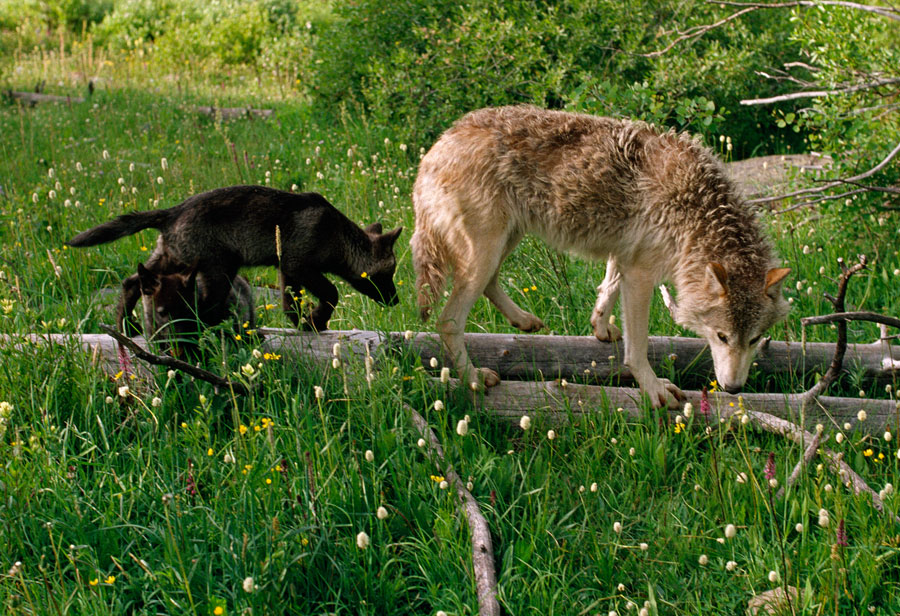
Following the Scent:
Scent is an important way wolves communicate. Scent glands between the toes on the bottoms of their feet leave a personal chemical signature in the dirt, grass and snow wherever they travel.
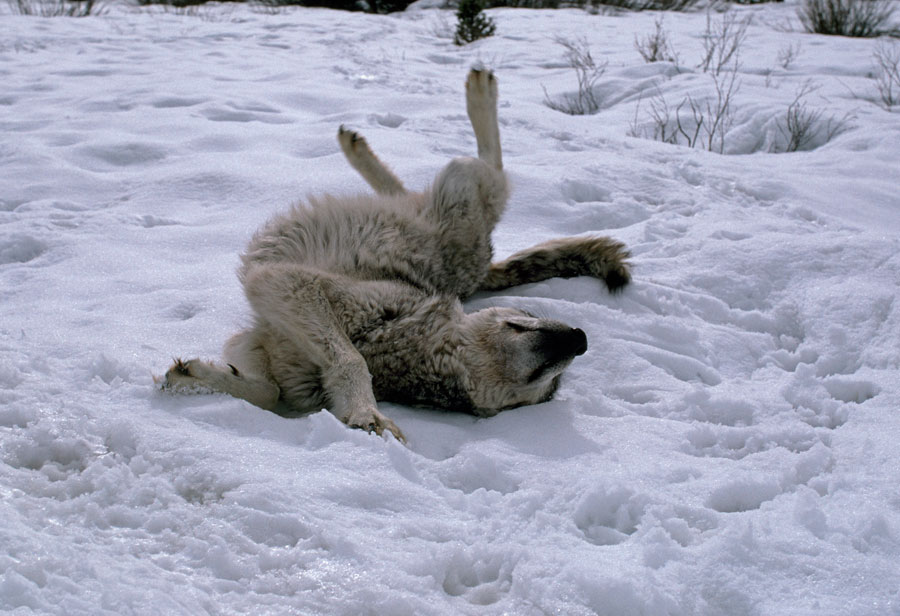
Scent Rolling:
When wolves find something with a strong or unusual odor like an animal carcass, they will roll in their prized discovery, coating their fur with the odor.
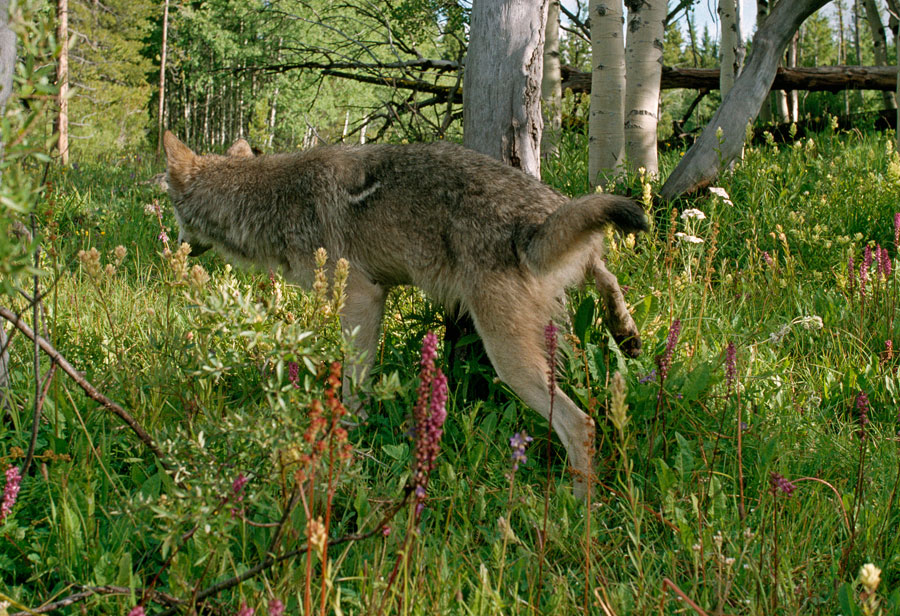
Scent marking:
Wolves use scat and urine to mark the boundaries of the pack’s territory, a clear message to neighboring packs and dispersing wolves. It is also likely that wolves can identify individual wolves by the smell of their urine.

